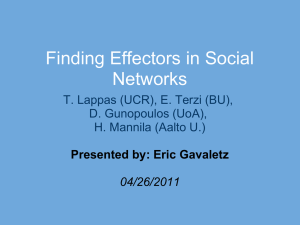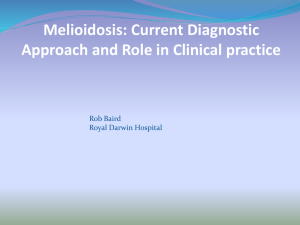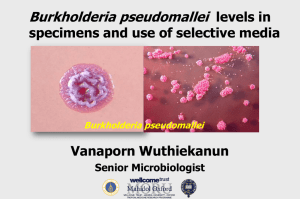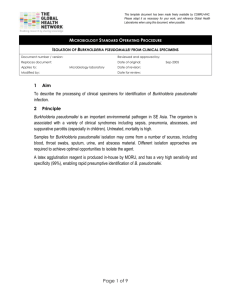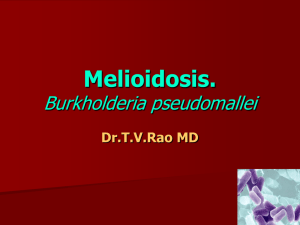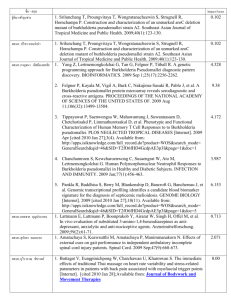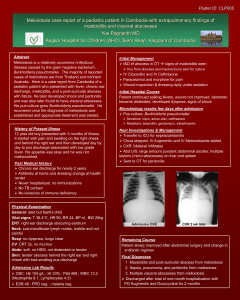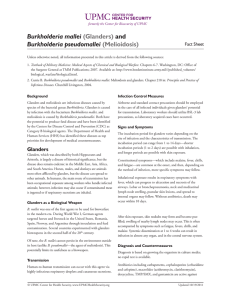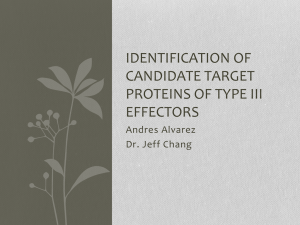Identification of caspase-1 activating factor of Burkholderia
advertisement
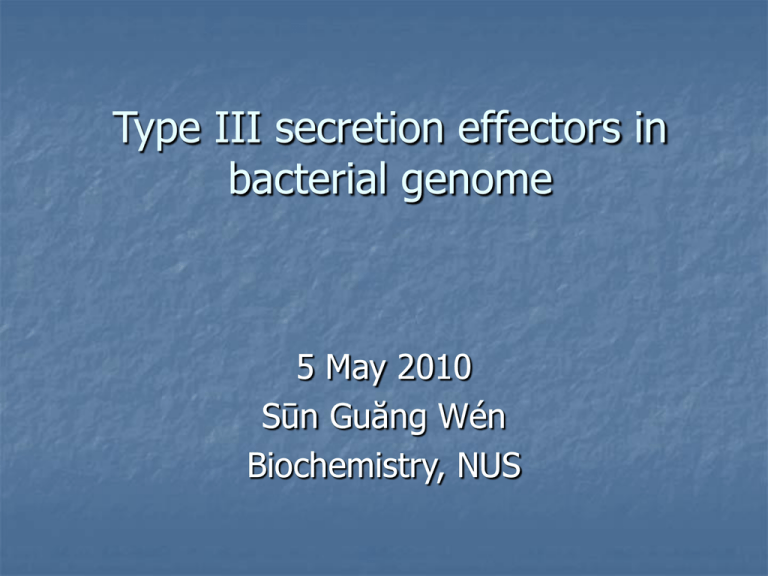
Type III secretion effectors in bacterial genome 5 May 2010 Sūn Guăng Wén Biochemistry, NUS Melioidosis Causative agent: Burkholderia pseudomallei Endemic area: SEA; northern Australia Symptom: variable Diagnosis: Serum test, culture of bacteria, PCR Risk factor: Type II diabetes and kidney failure Treatment: Ceftazidime Vaccine: not available Burkholderia pseudomallei • Facultative anaerobic, in soil and surface water • Opportunistic pathogen • Resistant to many antibiotics • Huge genome: 4.1Mb +3.2Mb • Many virulence factors: siderophore, flagella, T3SSs, T6SSs • Able to invade cells and survive intracellularly Type III secretion system (T3SS) SPI I of Salmonella T3SS and flagella Distribution of T3SSs among pathogenic bacteria Nat rev MCB 3:743 T3 Effectors modify host signaling pathways Effectors mimic host protein function Effectors can introduce covalentmodification Effectors are less conserved N-terminal of effector contains secretion signal Fusion assay N-ter signal reporter Determination of secretion signal http://www.effectors.org/ ---very high false positive rate! PLoS Pathogens April 2009 | Volume 5 | Issue 4 | e1000376 Signal is more defined within a species Inv/mxi/spa-like T3S3 of B. pseudomallei Secreted effectors Translocons Base and inner membrane complex Regulator Molecular Microbiology (2002) 46(3), 649–659 Molecular Microbiology (2010) 76(3), 677–689 Chaperone Burkholderia pseudomallei genome Burkholderia pseudomallei K96243: NC_006350; NC_006351 , http://www.ncbi.nlm.nih.gov/sutils/genom_table.cgi http://www.sanger.ac.uk/cgi-bin/blast/submitblast/b_pseudomallei The challenge: To identify T3S3 effectors in bp genomes Define training sets, collect effector sequences Find patterns in N-terminals Search Burkholderia pseudomallei genomes Blast top hits in protein databases Verify through experiments Assembly of T3S needle
